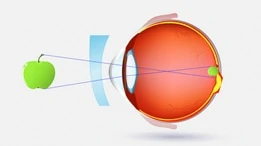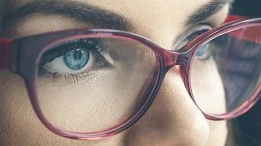Presbyopia: Everything You Need To Know

Age may bring wisdom but it also brings presbyopia (Greek for “aging eye”). If you’re in your 40s or older, you’re probably familiar with the symptoms. Over time, it gets harder to focus on objects close up. Suddenly, you have trouble reading a menu in the low light of a restaurant, need to hold a book at arm’s length in order to read the type, or have trouble doing hobby work without the aid of magnifying reading glasses. You may also find you’re suffering from headaches and eyestrain trying to cope with these changes in your vision.
You may joke with your friends about needing longer arms but inside you’re more likely feeling like you don’t want to wear reading glasses in public and what can you do to fix it!
Unlike being nearsighted or farsighted, presbyopia requires a look at different vision correction options then say, having a “LASIK” procedure.
What happens to our eyes when we age? What exactly is presbyopia? And what options are available to correct it? Here is some information that helps explain this common age-related eye condition:
Presbyopia & The Aging Eye
Presbyopia is part of the natural aging process. Our eyes change with age and this is why presbyopia occurs (and also cataracts, age-related macular degeneration and other conditions). When we’re younger, the lens inside our eye is soft and flexible and can easily switch focus from near to distant objects. When we get older, the lens becomes less elastic and can no longer change shape to bring things into focus clearly.
Presbyopia affects everyone, whether they are already nearsighted (myopic) or farsighted (hyperopic) – which are due to the shape of the cornea, not the lens – or have perfect vision.
Diagnosis
Your eye care professional will give you a series of tests to evaluate the inside of your eyes and your distance and near vision. Once you’ve been diagnosed with presbyopia, you’ll have several treatment options.
Nonsurgical Treatment Options
- Reading glasses. If presbyopia is the only eye condition you have, then wearing reading glasses to see things close up is your simplest option. If you wear contact lenses, you can get prescription reading glasses that you’ll wear in addition to your contacts –when you need to see things up close.
- Multifocal eyeglass lenses. If you’re already wearing prescription eyeglasses, you can switch to multifocals – bifocal, trifocal and progressives – which have two or more lens powers for distance, intermediate and near vision. If you work at a computer, you can get prescription glasses specially calibrated for the distance between you and the screen.
- Multifocal contact lenses. These work much the same way as multifocal glasses, with two or more prescriptions built into the optics of the lens.
- Monovision contact lenses. These have different prescriptions for each eye. You’ll wear a contact lens in one eye to correct your distance vision (usually your dominant eye) and a different one in your other eye to correct your near vision. The two will work together so that you’ll be able to see clearly at all distances.
Surgical Treatment Options
- LASIK doesn’t prevent or worsen presbyopia. What it does is improve and correct nearsightedness, farsightedness and astigmatism. This can help reduce your dependency on corrective lenses, but as you age, you may find you need eye glasses for reading and close work.
- Monovision LASIK. This procedure will correct the distance vision of one of your eyes (usually the dominant eye) and make the other eye slightly nearsighted so it can focus on nearby objects clearly.
- Refractive lens exchange. This surgery will replace your eye’s natural lens with an artificial intraocular lens (IOL) to correct your presbyopia.
- Corneal inlay. If you have good distance vision, your surgeon can implant a corneal inlay (tiny lenses) into the cornea of your non-dominant eye. This will sharpen your near vision and keep your distance vision.
Once you hit 40, it’s advisable to get regular eye exams to check for age-related vision problems, including presbyopia.
As you can see, today’s world full of modern medical technologies, so reading glasses are not the only option for dealing with aging eyes. To find out which one is right for you, make an appointment with your local eye care professional.




